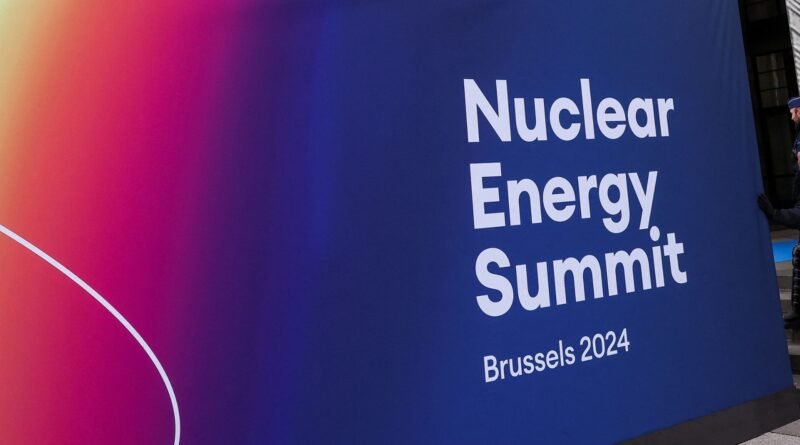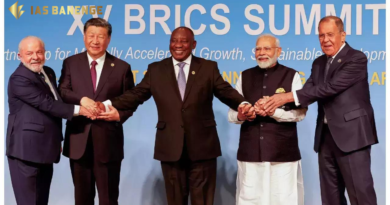Nuclear Energy Summit | IAS Banenge
Context
- Brussels hosted the first-ever Nuclear Energy Summit.
- It was co-chaired by the Prime Minister of Belgium and the Director General of the International Atomic Energy Agency (IAEA)
Background:
- COP28 in Dubai (UAE) highlighted nuclear energy’s crucial role in meeting climate goals.
- 22 world leaders signed a declaration, aiming to triple nuclear energy capacity by 2050.
Nuclear Energy Summit
- The Nuclear Energy Summit, an initiative in collaboration with the IAEA’s ‘Atoms4Netzero’ programme, is part of the multilateral approach to decarbonisation.
- World leaders gathered to emphasize nuclear energy’s role in combating climate change.
Advantages of Nuclear Energy:
- Nuclear power emits significantly less carbon compared to renewables like solar, wind, and hydropower.
- Provides uninterrupted energy regardless of geographical limitations.
- Offers low operating costs, smaller land footprint, and longer life cycle compared to other renewables.

Advantages of Nuclear Energy:
Nuclear power offers several advantages in the context of combating climate change:
- Nuclear power emits significantly less carbon than solar, wind, hydropower, and geothermal sources—four times less, in fact.
- Its unique ability to provide uninterrupted energy regardless of location makes it essential for a diverse renewable energy mix.
- Nuclear power plants boast lower operating costs, require less land, and have longer lifecycles compared to other renewables, enhancing their sustainability.
Financing Nuclear Energy:
- Despite recent technological advancements, such as Small Modular Reactors (SMRs) and improved safety measures, securing financing for nuclear projects remains a challenge.
- Multilateral Development Banks (MDBs) and private investors have been hesitant to invest in the nuclear industry, necessitating a reevaluation of financing policies.
- Successful funding models in countries like France, South Korea, Russia, and the U.K. demonstrate the potential for cooperative financing approaches to support nuclear projects.
Global Nuclear Landscape:
- There are currently 440 nuclear reactors worldwide, accounting for a quarter of low-carbon energy.
- 60 reactors are under construction, with 110 in the planning stage, particularly in Asia.
- China aims to increase nuclear energy’s share to 10% by 2035 and 18% by 2060.
India’s Nuclear Outlook:
- India’s first commercial Nuclear Power Plant in Pahalgarh, Tarapur offers reliable energy at 2/kWh lower than solar power tariffs.
- Despite its versatile nature, nuclear power contributes only 1.6% of the total renewable energy mix in India.
- India’s nuclear plants offer reliable energy at competitive prices compared to coal and solar.
- Challenges include stigma, regulation, and project overruns, limiting adoption.
- Recent liberalization efforts, including private investments and capacity expansion plans, signal a positive future for India’s nuclear industry.
- $26 billion in private investments, the aim of a phase-wise tripling of nuclear capacity from 7,480 MW to 22,480 MW by 2031-2032 all mark a positive future for the industry.
- The Prototype Fast Breeder Reactor (PFBR) represents a significant advancement in India’s nuclear capabilities.
Conclusion:
- The Nuclear Energy Summit underscores the importance of nuclear energy in achieving climate goals.
- Financial innovation and global cooperation are crucial for realizing the full potential of nuclear power in the energy mix.
READ MORE- Current Affairs 22 March 2024| Ias Banenge




